

(excerpted from Jack's History of Fall City)
Dr. Richards had patients in Fall City and Preston, which meant driving a horse and buggy back and forth between the two towns to check the patient's progress. With little experience in the field of telephones, he bought two sets, one for his office in Fall City at the Taylor Hotel and the other for a house in Preston, and connected them with a few miles of telephone wire. Dr. Richard's telephone system was an overnight success and later a third phone was added at Doc Taylor's sister's house, located at the west end of Eva Street (now SE 44th Street).
Around 1900, Fall City was connected to the long distance line between the newly built Puget Sound Power Plant at Snoqualmie Falls and Seattle. The phone was installed in Emerson Neighbor's Store and for the first time, merchants could call Seattle.
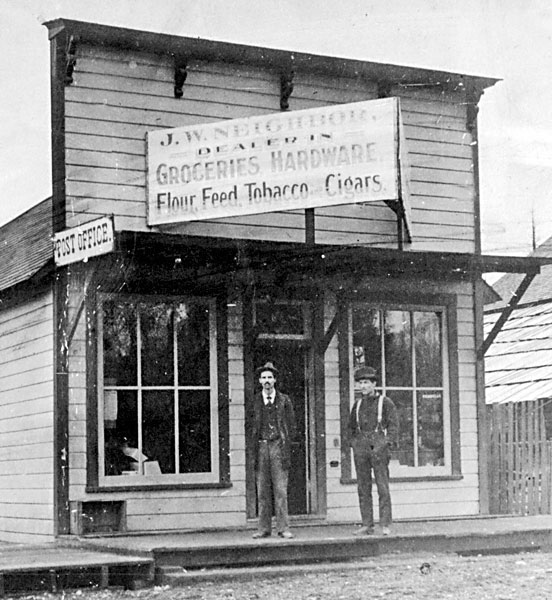
In 1905, E.B. Cowles from Tolt (now Carnation) asked Mr. Neighbor if a telephone line could be installed between Cowles' store and the Northern Pacific Depot in Fall City, so he could call there to find out if a shipment had arrived. Emerson thought it was a good idea and borrowed $300 from Julia Harshman to finance the venture. He then went to Seattle and brought back three telephones and about seven miles of wire which Jesse Kelley, Frank Hume and Bill Crable strung between Tolt, Fall City and the Northern Pacific Depot. In 1908, Emerson Neighbor got a job in Seattle, but still owed Mrs. Harshman the money he'd borrowed. He solved the problem by giving her the telephone system. Thus, the Harshman Telephone Company, with about 30 paying customers, was formed.
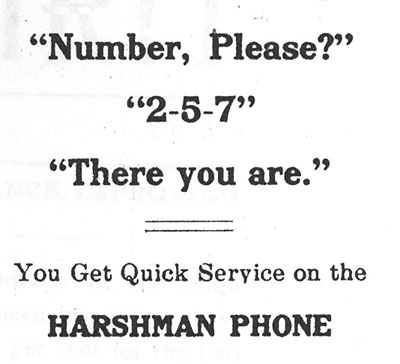
In 1908, Newt sold his interest in a lumber mill near the Fall City Depot and turned his efforts towards his wife's newly acquired telephone company, where he became the supervisor of equipment. In 1912, when Newt and Julia Harshman acquired the Martin Prescott house on the SW corner of River and Mill Streets, the switchboard was installed there.
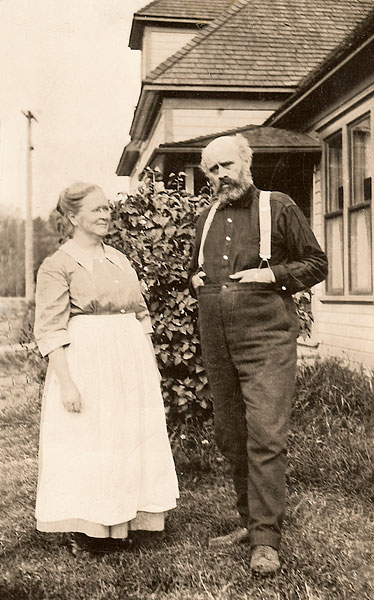
Before the Harshmans arrived in Fall City, they had a daughter in 1895. They named her Gertrude Fern. She met a soldier stationed at Duvall in the Spruce Battalion, harvesting wood to make airplanes during World War I. His name was George Satterlee, and following a whirlwind courtship, they were married in 1919 at the Harshmans. Gertrude and George began having children and Newt and Julia built a house for them on Eva Street (now SE 44th) in 1923. Newt liked his grandchildren and was a regular visitor. There, in the summer of 1929, Newt was stung by a bee and fell over dead.
George Satterlee took over the job of equipment supervisor for Newt and the business continued. It was also about this time that Gertrude began taking a more active part in the Harshman Telephone Company. It wasn't long before the Satterlee children were also involved. The girls, Julia, Georgia and Emma, all took turns at the switchboard, and the boys, Chuck and Jim, were out helping their dad, climbing poles and stringing wire.
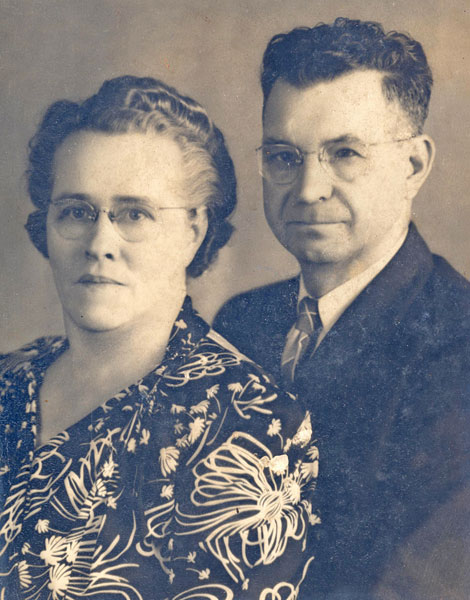
Julia Harshman changed the name of the business to The Fall City Telephone Company and continued adding customers until she passed away in 1933. At that time, the company had approximately 250 customers and many advertisers. Her daughter, Gertrude Satterlee, inherited the company and followed in her mother's footsteps. However, Julia was a tough act to follow.
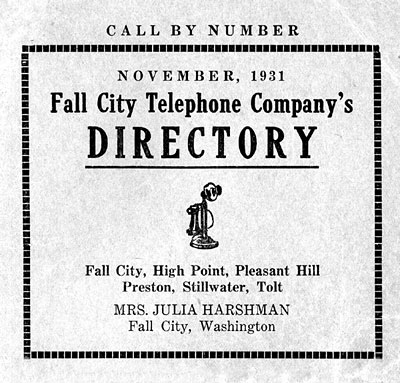
From the Fall City Telephone Directory, May 1943
For the Cost of ONE GALLON OF GASOLINE
The price of one gallon of gasoline will pay for all the protection, comfort and pleasure that almost a week's telephone service will bring you. The telephone will bring the markets to your door. It will enable you to secure immediate assistance in case of an accident and it will make possible those little visits over the wire that every woman loves.
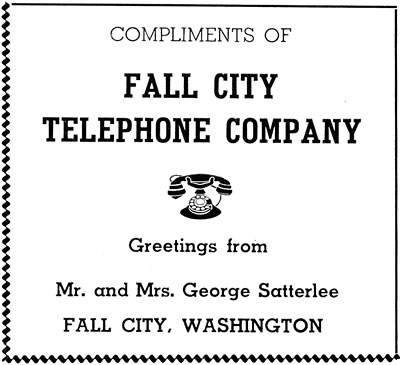
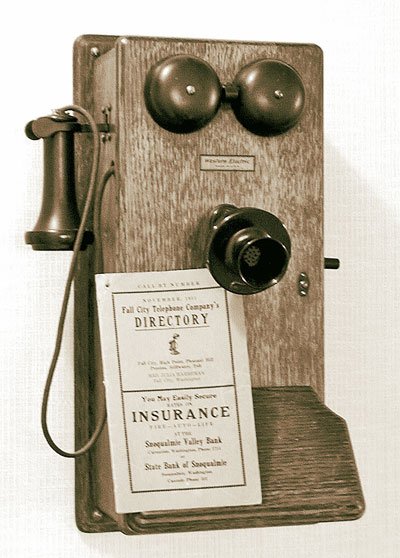
Calls made within the Fall City Telephone Company system required the operator to use the switchboard to route the calls. To make a local call from home, the following steps were necessary:
"Three shorts and a long, "
"Three shorts and a long."
It keeps on ringing madly
From eight o'clock 'til dawn.
And when you're sweetly sleeping
With the nighttime almost gone,
You're suddenly startled wide awake
With "three shorts and a long."
It keeps on ringing through the day.
You think, "They must be through.
I'd better get my order in---
some onions for a stew.
I need some cheese and crackers
And perhaps some shrimp or prawn.
I lift the receiver from the hook...
And it's "three shorts and a long."
And so I am slowly going mad,
The sun has ceased to shine
Upon this pleasant Valley
And this old party line,
And if you ask me,
"What's the matter?
You look so pale and drawn."
You'll very likely hear me mutter,
"It's three shorts and a long."
(Marjorie Raven was a Fall City telephone operator during the 1920s and wrote this poem about her old party line.)
The disadvantage to the old ringer type phone system was the party line, meaning that several customers shared the same line. Most people in town were on a party line with from two to six other subscribers. Dr. Cheney had one of the few private lines. Everyone else suffered the waiting, lack of privacy and the interruptions of the party line.
Emma Jean Satterlee McCurry remembers working as operator in her grandmother Harshman's phone company and learning the party line system. (excerpted from "Preserving the Stories of Fall City"):
"Our phone number was 155; that was on line 15, and our specific ring was five short rings. If your number was 151, it would just be one short ring. If it was 152, it would be two short rings, up to 155. Then when it got up to 156, it was a short and a long; 157 was two shorts and a long; 158 was three shorts and a long; 159 was four shorts and a long. You heard the rings for everyone on your line, so you had to pay attention and count the rings to know when to answer.
So when you acted as an operator and a call came in, you'd answer it and say, "Number, please." Then you'd go to whatever line it was and do the right rings. But at home, if it was on your own line, you'd have to hold the receiver down and do the rings yourself. If you were at 155 and wanted to call 156, then you'd hold the receiver down and do your own short and a long."
The telephone company and switchboard were the "nerve center" of Fall City in the early days. Many people have fond memories of working as an operator. In case of fire or other emergency, one long, two short and one long ring would be sent to all phones.
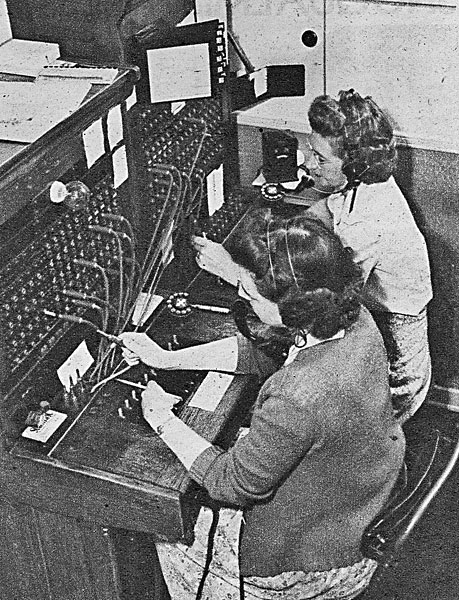
In 1947, Mr. Gaines of Cascade Telephone Company in North Bend made the Satterlees an offer they couldn't refuse. After the sale was consummated, Cascade immediately made plans to replace the old ringer telephones with the dial type, scrap the switchboard and install fully automatic switching. In 1951, switching from ringer type to dial type phones was complete. No operator was required unless you made a long distance call. With the new dial type phones, calls were routed through the automatic switchboard without the assistance of an operator.
The new dial phones were a step into the future. As with all technical advances, there was a price to pay for the convenience of bypassing the operator. A huge automatic switching system was purchased by Cascade and installed in the small building next to the telephone office, and additional lines were added to make each dial phone on an independent line.
Under the management of Julia Harshman, business increased by about ten customers per year. The Satterlees kept the status quo. Under Cascade Phone Company, business increased by about 40 customers per year due to better maintenance practices and the promise of dial telephones. Cascade Telephone Company had 1,026 customers when Telephone Utilities bought them out in 1969. By 1972, the number of customers in the Fall City area had increased to 1,245. The ringer phone and party line were history.
